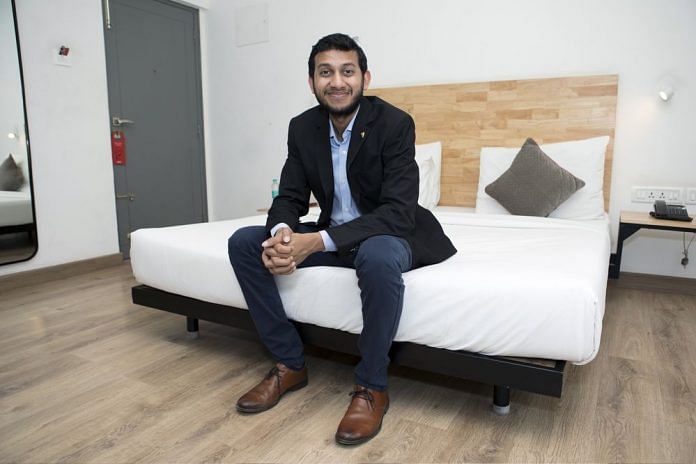New York: Oyo Hotels & Homes, a lodging operator backed by SoftBank’s Vision Fund, is betting the same formula that fueled the company’s rapid growth in India and China can work in the U.S.
Oyo, which opened its first U.S. hotel at the beginning of the year, plans to invest $300 million to expand in the country, Chief Executive Officer Ritesh Agarwal said in an interview. The company will use those funds to build out technology, design and operating teams and renovate properties. It’s adding hotels at the pace of one a day, and aims to expand its U.S. offerings at five times that rate by the end of the year.
“So far we’ve been very focused on, build a good product and price it very effectively for the consumer,” he said. “We want to make sure that we do it right rather than just do it fast. If that means three a day and not five a day, life goes on.”
Agarwal founded Oyo six years ago, at age 19, to remedy what he saw as a lack of good, affordable hotels in his native India. Now the company operates more than 23,000 properties with more than 850,000 rooms, making it the world’s sixth-largest lodging provider by its own measure. Oyo’s growth has attracted plenty of venture capital, including a $1 billion funding round last year from investors including SoftBank , Sequoia Capital and Lightspeed Ventures.
For hotel brands to succeed, they have to appeal to both guests and real estate investors, who pay companies like Oyo a percentage of revenue. Agarwal seeks to attract customers with what he described as a chic yet approachable aesthetic and affordable prices, with rooms typically costing $60 to $110 a night. At those price points, the company is competing with a wide range of brands, including Days Inn by Wyndham and Tru by Hilton.
To convince property owners to align with Oyo, the company is often covering the cost of renovations and guaranteeing a set level of profits, both unusual for economy hotels. It takes Oyo less than a month to open a hotel, and the company works on five-year contracts, which may also appeal to owners. When Oyo invests in capital improvements, it takes a higher share of revenue.
Oyo already operates more than 50 properties across U.S. cities including Dallas, Houston, Atlanta and Miami. The combination of hip design at lowest-in-area prices has translated quickly to full hotels, Agarwal said. He highlighted one near a medical campus in Houston, where occupancy jumped to 90% from 22% within a month after Oyo took over management. Revenue per available room increased to $43 from $17.
The economy segment has fared well this year, due partly to a decrease in the supply of available rooms. For the first five months of 2019, occupancy rates for economy hotels rose 2.1% from the same period a year earlier, according to lodging-data provider STR. That compares with an increase of just 0.4% across all categories.
“It’s a segment that’s ripe for the picking,” said Paul Breslin, a managing director at consultancy Horwath HTL. “You go by some of these hotels and you’re shocked that people are paying for such poor quality. It’s not surprising that they‘re saying, ‘We can give people a better experience, and better stay and make some money on it.’” – Bloomberg
Also read: SoftBank-backed Ola to hire 150 engineers for its Silicon Valley technology centre






